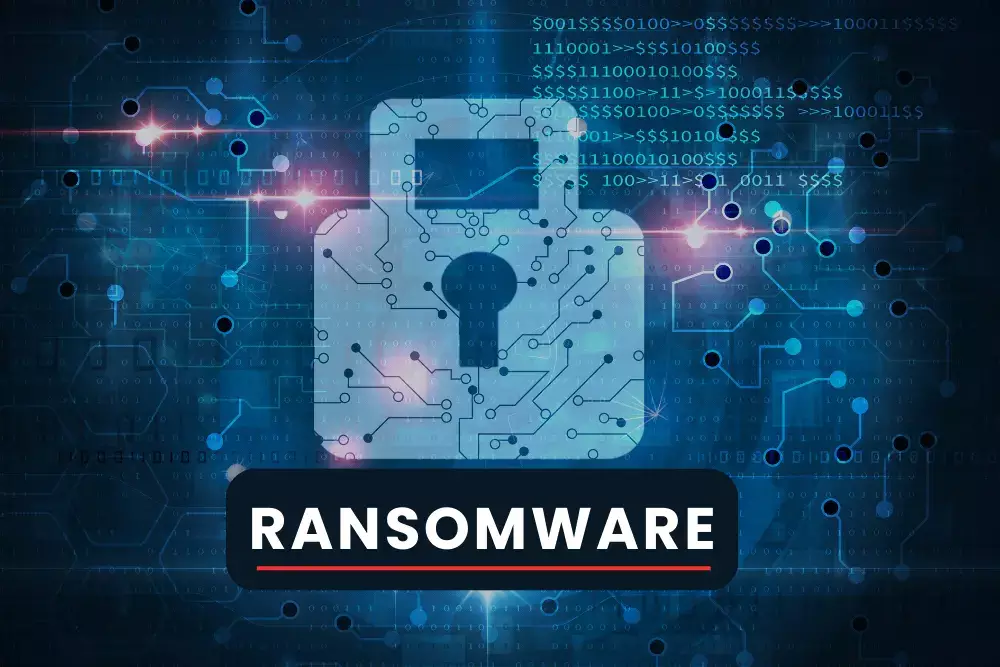In recent years, ransomware has become one of the most serious cybersecurity threats to businesses globally. Irrespective of their size or industry, it focuses on reaching out to all types of businesses. The consequences of a ransomware attack can potentially be disastrous for any organization. You will incur not only financial losses but also reputational damages and face various legal consequences.
To prevent and respond to ransomware attacks, it is important to have an effective monitoring mechanism in place. And that’s where Splunk comes in. Thanks to its ability to collect and analyze huge volumes of data, Splunk can prevent a ransomware attack before your organization becomes a victim. In this post, we will take a look at how Splunk protects an organiztion from a Ransomware attack.
What is ransomware?
Ransomware is a kind of malicious software that will encrypt your data and block your access to them until a ransom is paid. There are three stages in a ransomware attack -
- The attacker gains unauthorized access to your organization’s sensitive data and systems.
- They encrypt the data.
- They demand a ransom in exchange for the decryption key.
In most cases, the ransom is demanded in cryptocurrency. This makes it challenging to trace and recover. Ransomware can infect your system through various means such as opening email attachments, downloading malicious software, and visiting harmful websites.
How are organizations protecting themselves from ransomware?
Many organizations have started tracking and monitoring ransomware attacks in real time to protect themselves. They take preventive measures like -
- Using antivirus 24X7
- Ensuring that all the systems on the premises are completely patched
- Using services that block employee access to sites that are breeding places of ransomware attacks
- Configuring OS in a way that one can install only authorized applications
- Ensuring that all the employees are aware of the consequences and danger of ransomware attack
- Monitoring suspicious behaviors observed in the ecosystem.
Role of Splunk in protecting your business from ransomware
Splunk Enterprise Security, the robust security information and event management solution from Splunk can quickly detect and respond to ransomware attacks to minimize the impact and prevent further damage. Now, Splunk Enterprise Security monitors ransomware attacks in 2 phases. Let us understand each of them in detail.
Stage 1: Assimilate
This stage is all about aggregating and consolidating all the relevant data into one central location in Splunk. Doing this will give you a comprehensive view of your digital ecosystem. One of the key data types that you must collect is Endpoint data. Endpoints could include anything from your employee’s laptops to their mobile phone.
A ransomware attack starts at the endpoint. These endpoints often contain sensitive data about your organization which are attractive to cybercriminals. A ransomware attack targets the following data types normally:
- User data
- Process data
- Data related to any CRUD events
- Memory
- Device drivers
- Disk and network IO
- Metadata
Note: To get all these endpoint data into Splunk, you must use CIM compliant data with the help of add-ons and Technical Adapters. You might also have to use heavy forwarders if needed.
Stage 2: Track
Once you have successfully ingested the data into Splunk Enterprise Security, the next stage, Tracking, kicks in. It begins with building, enabling, and running correlation searches which act whenever a system shows ransomware behavior. Once such a system is found, it assigns a risk score and raises an alert known as a notable event to the analyst, who will then investigate the incident. It will finally forward to Splunk SOAR for further examination.
Now, let us now deep dive into correlation searches, also known as detections. The main prerequisite to building detection is to realize what to look for in the data. It could include the classic behavior of a ransomware attack or how it showcases itself in data. A word of caution, though - attackers are constantly evolving and finding new ways to avoid getting detected. So keep gathering threat intelligence to stay ahead of the attackers.
One popular framework under the threat intelligence bucket is MITRE ATT&CK. It is a vast repository of all the observed behavior of attacks assimilated from a variety of cybersecurity communities. Besides this, you can also adopt frameworks like Lockheed Kill Chain and NIST CIS controls to enhance your threat intelligence capabilities.
Now, Splunk Enterprise Security comes out of the box with multiple types of correlation searches, but they are just the tip of the iceberg. There are a lot more correlation searches developed by the Splunk Threat Research Team(STRT) that can be found in the use case library of the ES Content Update(ESCU) app. Each of these correlation searches is mapped to a threat technique in MITRE ATT&CK. You can also find Splunk usecases in the Splunk Security Essentials(SSE) app. It is a knowledge hub that updates content from the STRT and maps them to MITRE ATT&CK.
Now that you know how Splunk protects your business from Ransomware attacks, it is time to take action.
Implementing Splunk to protect your business from ransomware
Most businesses of today are unprepared to protect themselves from Ransomware attacks. They end up suffering from significant data loss and disruption to regular operations. Splunk implementation is an essential first step in protecting yourself from ransomware attacks. Splunk can seamlessly monitor your endpoints, detect anomalies and prevent potential attacks.
However, to implement Splunk services successfully and effectively, you need to partner with a Splunk specialist like Positka. Being a successful Splunk implementation partner, we can provide the necessary expertise and support to integrate it with your existing systems and train personnel to use it effectively. Once it is successfully implemented, you will have the confidence that you are adequately protected against ransomware attacks and other cyber threats.

